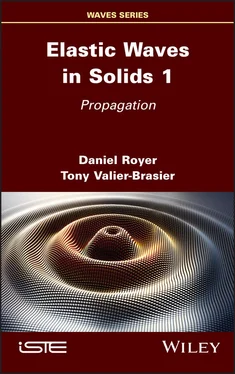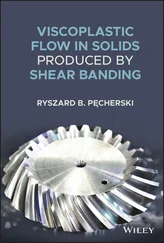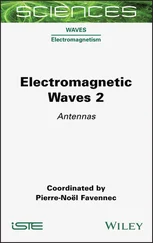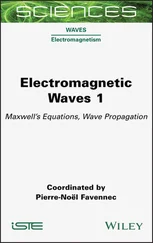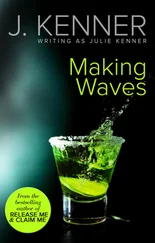1 Cover
2 Title Page Series Editors Pierre-Noël Favennec† and Frédérique de Fornel
3 Copyright First published 2022 in Great Britain and the United States by ISTE Ltd and John Wiley & Sons, Inc. Apart from any fair dealing for the purposes of research or private study, or criticism or review, as permitted under the Copyright, Designs and Patents Act 1988, this publication may only be reproduced, stored or transmitted, in any form or by any means, with the prior permission in writing of the publishers, or in the case of reprographic reproduction in accordance with the terms and licenses issued by the CLA. Enquiries concerning reproduction outside these terms should be sent to the publishers at the undermentioned address: ISTE Ltd 27-37 St George’s Road London SW19 4EU UK www.iste.co.uk John Wiley & Sons, Inc. 111 River Street Hoboken, NJ 07030 USA www.wiley.com © ISTE Ltd 2022 The rights of Daniel Royer and Tony Valier-Brasier to be identified as the authors of this work have been asserted by them in accordance with the Copyright, Designs and Patents Act 1988. Any opinions, findings, and conclusions or recommendations expressed in this material are those of the author(s), contributor(s) or editor(s) and do not necessarily reflect the views of ISTE Group. Library of Congress Control Number: 2021951482 British Library Cataloguing-in-Publication Data A CIP record for this book is available from the British Library ISBN 978-1-78630-814-6
4 Preface
5 List of Main Symbols
6 1 Propagation in an Unbounded Solid
1.1. Reviewing the mechanics of continuous media
1.2. Isotropic solid
1.3. Anisotropic solid
1.4. Piezoelectric solid
1.5. Viscoelastic media
7 2 Reflection and Transmission at an Interface
2.1. Boundary conditions
2.2. Direction and polarization of reflected and transmitted waves
2.3. Isotropic solid: transverse horizontal wave
2.4. Isotropic media: longitudinal and transverse vertical waves
2.5. Anisotropic medium: diffraction matrix
8 3 Surface Waves and Interface Waves
3.1. Surface waves
3.2. Interface waves
3.3. Bleustein–Gulyaev wave
9 4 Guided Elastic Waves
4.1. Waveguide, group velocity
4.2. Transverse horizontal waves
4.3. Lamb waves
4.4. Cylindrical guides
10 Appendix 1 Differential Operators in Cylindrical and Spherical Coordinates
11 Appendix 2 Symmetry and Tensors
12 Appendix 3 Transport of Energy
13 References
14 Index
15 End User License Agreement
1 Chapter 1 Figure 1.1. Equilibrium of a fixed volume V inside the solid
Figure 1.2. Three stresses act on each of the three orthogonal faces. From the p...
Figure 1.3. At any point M marked by the vector x, the vibration created ...
Figure 1.4. a) Longitudinal wave: polarization and wave vector are parallel. At ...
Figure 1.5. Cylindrical waves: a) longitudinal and b) transverse
Figure 1.6. Composite made up of carbon fibers embedded in a thermoset epoxy res...
Figure 1.7. In general, three plane waves propagate in any direction n of...
Figure 1.8. The propagation direction n is defined by the angles θ and ϕ
Figure 1.9. Propagation in the symmetry plane XY of an orthotropic solid. The qu...
Figure 1.10. The projection of the energy velocity vector Ve on the propa...
Figure 1.11. Characteristic surfaces: a) Slowness surface: the energy velocity <...
Figure 1.12. Section of the wave surface. A change in curvature of the slowness ...Figure 1.13. a) Slowness surface (s/km) and b) wave surface for a copper crystal...Figure 1.14. Cross-section of (a) the slowness surface and (b) the wave surface ...Figure 1.15. 3D slowness surface of quasi-longitudinal and quasi-transverse wave...Figure 1.16. Slowness curves (s/km) in the XY plane for bismuth germanium oxide....Figure 1.17. Cross-section of the slowness surface of lithium niobate (class 3m)...Figure 1.18. Electromechanical coupling coefficients KL and KT as functions of t...Figure 1.19. Maxwell model. The real and imaginary components of an elastic modu...Figure 1.20. Imaginary component of the shear modulus of a polymer as a function...
2 Chapter 2Figure 2.1. If the density of the force p exerted on the surface Σ is zer...Figure 2.2. Snell–Descartes law. The projections, on the interface between the t...Figure 2.3. Interface between two isotropic solids. The incident transverse vert...Figure 2.4. Isotropic solid: Reflection of an incident wave that is a) transvers...Figure 2.5. Diagram of the successive echoes in the plate Figure 2.6. Evolution of the moduli of the reflection (r) and transmission (t) c...Figure 2.7. Moduli of the reflection coefficients a) rLL and b) rLT as functions...Figure 2.8. Slowness curves for a free surface and an incident transverse vertic...Figure 2.9. Moduli of reflection coefficients a) rTT and b) rTL versus the angle...Figure 2.10. Intensity reflection coefficients RLL and RLT and intensity transmi...Figure 2.11. Slowness curves for a solid–fluid interface and an incident transve...Figure 2.12. Intensity reflection coefficients RTL and RTT and intensity transmi...Figure 2.13. Reflection and transmission at a liquid–solid interface. a) Intensi...Figure 2.14. Plate with parallel faces of thickness h immersed in a fluid Figure 2.15. a) Velocity and b) attenuation of longitudinal waves measured in a ...Figure 2.16. Depending on the medium from which it comes, the amplitude of the i...Figure 2.17. Solid with monoclinic symmetry (binary axis parallel to Ox 2 ). Polar...Figure 2.18. a) Slowness curves of the reflected and transmitted waves generated...
3 Chapter 3Figure 3.1. Disposition of the axes Figure 3.2. Variation of the Rayleigh wave velocity VR with the ratio of the bul...Figure 3.3. a) Displacement and b) stresses of the Rayleigh wave in the depth of...Figure 3.4. Rayleigh wave: a) Deformation of the material as the wave passes thr...Figure 3.5. Evolution of parameters E, I 1 and I 2depending on the ratio of the b...Figure 3.6. The stiffness of cube A, which has one of its six faces free, is red...Figure 3.7. Variation, with depth, of the longitudinal (L) and transverse (T) co...Figure 3.8. TV and QTH waves propagating in the (001) plane of a cubic crystal Figure 3.9. Phase matching condition between the Rayleigh wave and the QTH wave ...Figure 3.10. Propagation of Rayleigh waves (R), and pseudo-surface acoustic wave...Figure 3.11. Characteristic curves in the XY plane of crystallographic axes for ...Figure 3.12. Capacitor formed of two electrodes in contact with the piezoelectri...Figure 3.13. Methods for investigating surface acoustic wave properties of a cry...Figure 3.14. Waves at the solid-fluid interface, disposition of the axes Figure 3.15. Displacement of the Scholte wave in the liquid (top) and in the sol...Figure 3.16. Fused silica-fluid interface. a) Attenuation of the leaky Rayleigh ...Figure 3.17. Waves at the interface between two solids, arrangement of the axes Figure 3.18. Variation, on both sides of a steel-duralumin interface, of the two...Figure 3.19. Maps of the Stoneley wave velocity (km/s) as functions of the ratio...Figure 3.20. Bleustein–Gulyaev wave in a zinc oxide crystal. Variation of mechan...
4 Chapter 4Figure 4.1. General structure of a guide. The waves propagate along the x 1 axis Figure 4.2. The wave travels in the Ox 1 direction by successive reflections on t...Figure 4.3. A guided wave presents nodal planes along the walls and also inside ...Figure 4.4. Dispersion curves of an elementary waveguide. At the angular frequen...Figure 4.5. Wave packet: a) Signal at a given time and b) amplitude density as a...Figure 4.6.
Читать дальше
